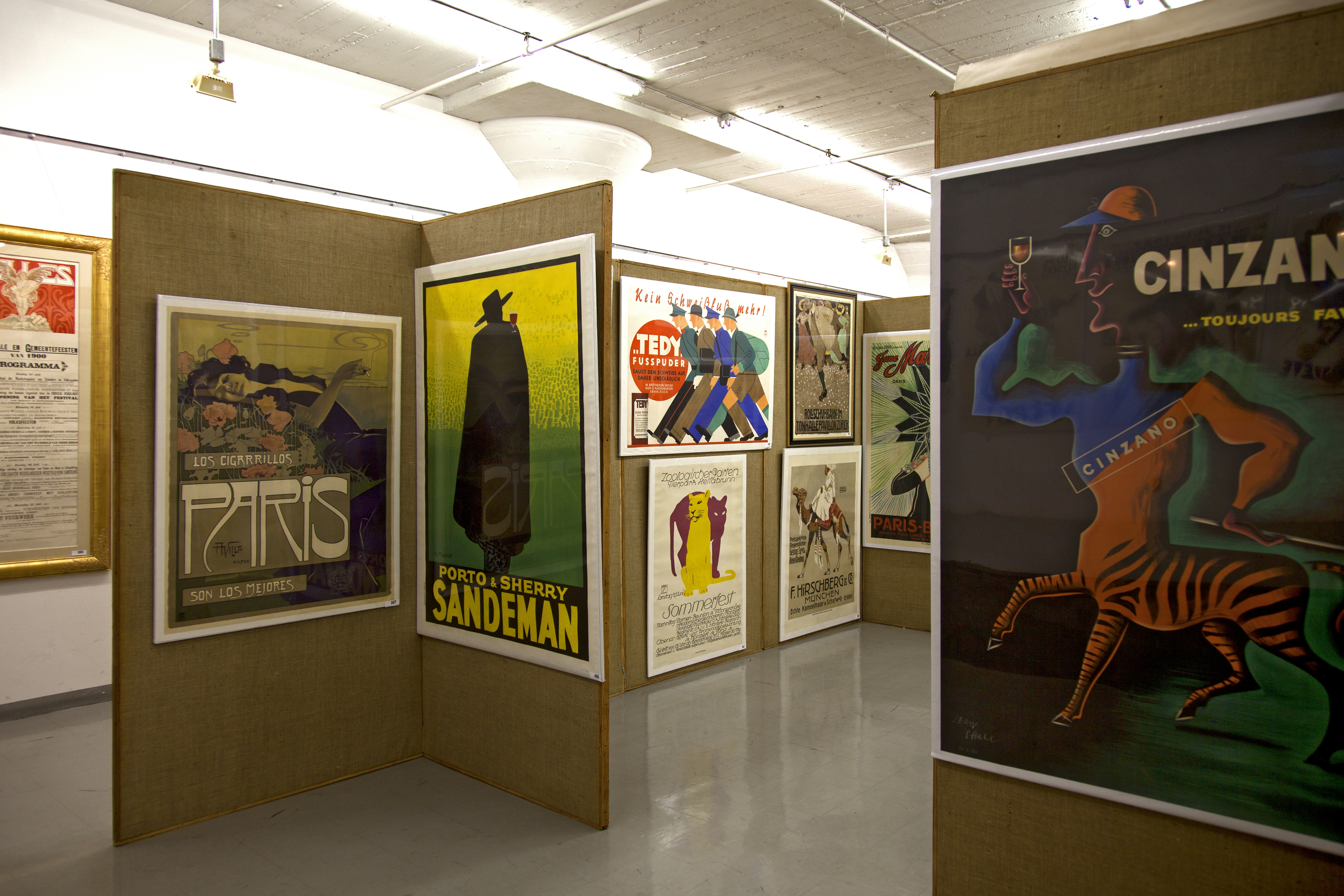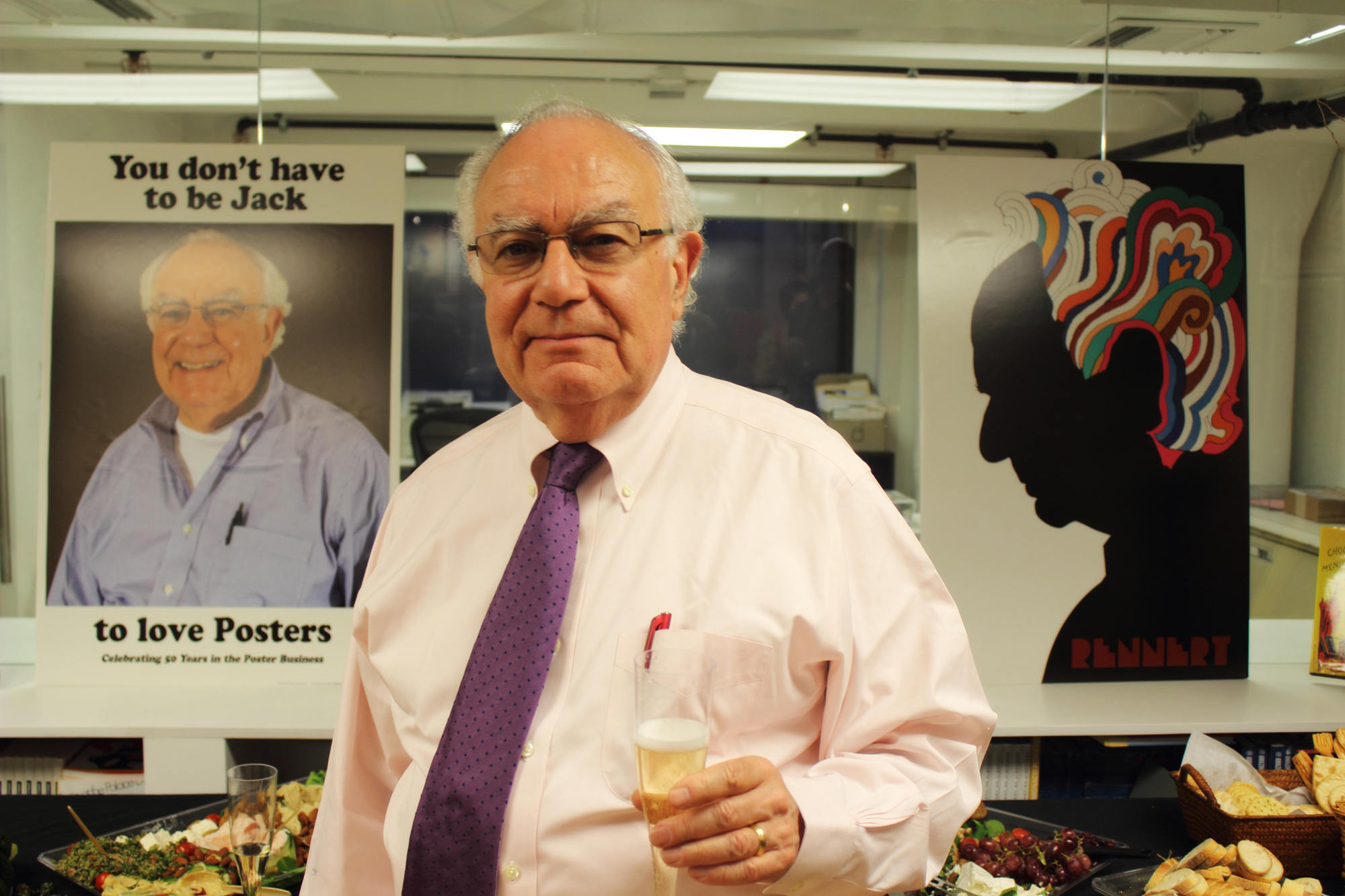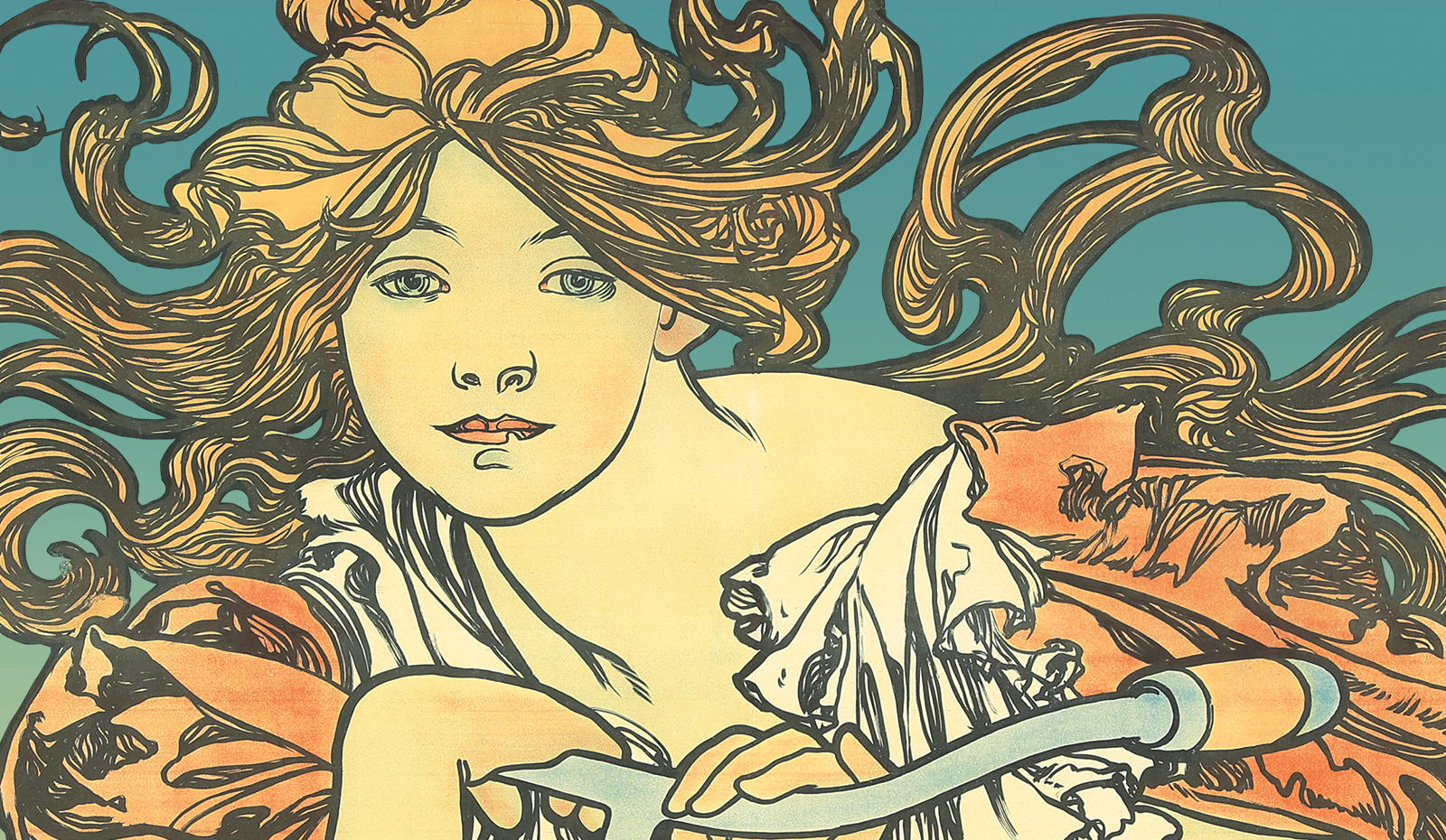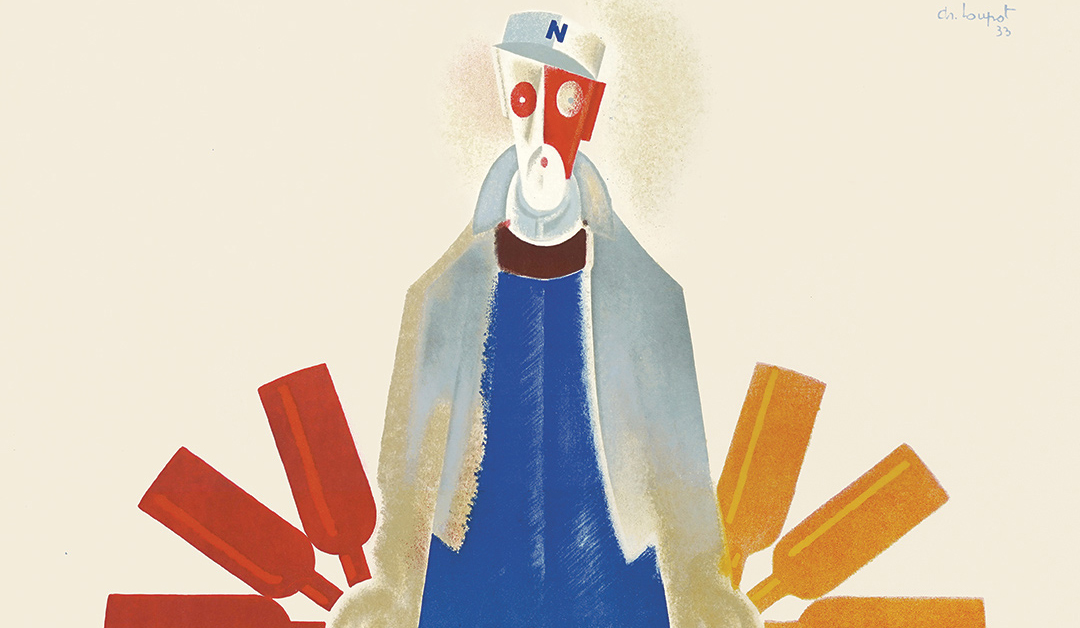Terry Tells All
Terry Shargel has been the Vice President at Poster Auctions International since practically the very beginning. She’s always loved posters, and in combining that passion with her uncontested experience in the field, she offers a unique perspective to not only our own business, but also the poster community at large. In anticipation of our 78th Rare Posters Auction, our Editorial Director picked Terry’s brain about the history of the company, her favorite posters, and the challenges and joys of working with posters.
Jessica: How did you first get involved with Poster Auctions International?
Terry: It all started in 1985. I liked posters then, and I purchased posters. At the time, I had been manufacturing children’s clothing for five years, and I really enjoyed that, but I wasn’t aggressive enough to be a clothing manufacturer—I’d have to be a certain cut-throat kind of person to do that. So I decided my next career would be to open a poster gallery—just like that! I thought that the Hamptons were desperately in need of a poster gallery, and knowing absolutely nothing, I rented a space. I knew one dealer, Jacques Athias, who used to do shows all around town. So I just went out and bought posters from him to sell in my space. I set it up, and it was very sweet and summery looking—and it was a total failure. Maybe I sold three posters all summer. I sat there every day; I had no employees. It was unbelievable how bad my sales were. So I bought a lot of books about posters, and I sat there all summer and read, and I noticed these books were all written by Jack Rennert. I continued working for Jacques when he did shows in New York at the Armory and the Colosseum. And when I saw Jack at one of the shows, I just walked up to him and asked him if he needed someone. He said, “Come on over,” and that was it.
Jack was six months into Poster Auctions; he had his first auction in March, and I started working for him in April. I closed my gallery, and the rest is history.
J: What does your job entail?
T: I do everything, from sales to shipping and everything in between: banking, paying bills, working with consignors and buyers, sending photos to people who are interested in posters, and putting any needed materials together for Jack. I also lay out the gallery for auction viewings and exhibitions.
J: What were auctions like when you first started—especially in the pre-digital age?
T: Forget digital—we used to work out of Jack’s apartment on 76th Street and Riverside Drive. We had a warehouse on 39th Street and 8th Avenue with a lot of furry friends living in it, and that’s where the posters were stored before the auction. We had the auction either in a hotel ballroom or at the ballroom of the Armenian Church at 34th Street and 2nd Avenue.
Before each auction, I went to the warehouse to take all the posters out of the tubes, line them up, and number them in sequence—then put them back in tubes in numerical sequence, and number the tubes to go to the Armenian Church. On the Thursday before the auction, we’d hire a truck to transport all the posters in tubes, and all the framed posters. And then we had to bring the walls—96 of them!—which each weighed around 100 pounds. We hired a group of guys from the 63rd Street YMCA, and “The Y Guys,” as we call them, helped us load them onto the truck and take them to the church over the course of several trips. The ballroom was downstairs, and there was no elevator at the church.
At the same time, our framer, AMCI, would (hopefully) deliver on that day, and then we had to unwrap everything, put the walls up… Jack liked to have a bookstore there also, so we’d bring five copies of every title we have, plus auction catalogues to sell, plus computers from the office—which were massive back then—and we had to get the telephone wires in and hooked up that weekend for the phone bids during the sale. And then hope that any of it worked, which frequently it didn’t. We had to hire someone just to run the computers. Before computers, we recorded every sale on 3×5 cards.
J: Wow! And that’s just the Thursday leading up. How was the rest of the weekend?
T: We had the viewing all day Friday and Saturday from 10am-6pm. After the viewing on Saturday, we had to break everything down and set up for the auction: take down all the walls, set up chairs, and get the posters ready for auction.
At the auction, we showed the posters in real time—not on a screen. So we had two people organizing the sequence back stage, and several other people lined up with posters—like a fashion show. Each person brought out a poster, showed it, and then had to carefully bring it back. If the poster was very long and they let it drop or it rolled to the floor, somebody would yell out, “Watch that poster! I just bought it!”
J: What were the audiences like at auctions then?
T: Around 200 people would show up at each auction, and they came from all over: buyers from Japan and France, and other auctioneers from around the world. There weren’t that many phone bids, and we only started with computers at Auction 10. We had so many people in the room that we had to hire four people to be auction spotters—their job was to say, “Bid! Bid!” And although Jack wasn’t the auctioneer back then, he would sit on stage and take notes with a spotter beside him, because the room was so big and you could easily miss people who were bidding. It was only two days, and everyone you ever knew in posters was there at that moment and showing the table was a big happening.
Jack also wined and dined our out-of-town visitors every night. And we also had lectures! On Saturday afternoons, Jack invited one of our guests to speak about their specialty—automobiles or aviation posters, for example. Sometimes we’d borrow antique bicycles or cars and have them in our space. Jack is a showman.
J: Why don’t people travel to auctions as much anymore?
T: The minute you saw the posters on the computer screen, you knew that the world was changing: they looked so good on the computer screen that there would be no reason for anyone to come to see them in person. Not everything looks that good—you can’t shop everything as well as you can shop posters, because you can see everything—it’s a very fool-proof way of purchasing, I think. It works well for our business. But it was more exciting to have auctions with people in the audience.
J: What is your process for laying out the gallery before an auction?
T: First, I look at the catalogue to see what we have. Then we bring everything upstairs, and it’s chaos—the posters are all over the place with no rhyme or reason. But those two or three days that we lay out the posters are my happiest days of the auction cycle. I start by laying out the front of the gallery with bicycles, automobiles, aviation, etc. Generally, these are Art Nouveau posters, so I like to hang Art Deco posters on the opposite wall. We always hang the most important posters at the center of the gallery; our top two artists are Toulouse-Lautrec and Mucha.
Beyond that, I try to create calm with the posters by having them relate to each other in some way, whether it’s by artist, country, subject, or color—I’m not above saying color and size are important; they can help create an energy that flows in the posters. I also consider how the subject matter is positioned: I wouldn’t have two women looking to the right, or place an aviation poster underneath something that makes it feel like it’s being crushed. I think by doing this, the posters seem comfortable wherever they are, and then you want to enjoy them and be with them. You can also imagine what they might look like hanging in your home.
J: What is your favorite part of this particular auction viewing?
T: The wall of the big Muchas is a joy. It just worked out with five theatre posters—5 is such a wonderful number to have—and two look this way, two look that way, and one stares straight ahead, and she’s the tallest one. It just worked out perfectly. It’s such a beautiful wall—you can see it from the street—and it gives me so much pleasure to walk in every day and see that.
J: And what are you favorite posters in this auction?
T: My favorite poster is the Riviera poster by Riccobaldi. I like the colors, I like the design, and I just bought a dog who comes from the Italian lake region!
I’ve always liked the May Milton very much; I think she’s really cool. We also have a lot of Art Deco posters, which I generally prefer; I like the Mauzan posters and the Cappiellos—they’re just so charming, accessible, and relatable, like the Amandine and the Triple-Sec. We also have really nice bicycle posters, like the Pal bicycles, which are really beautiful. And I love these two movie posters: King-Kong and Tobor the Great. I also love the two Flagg posters; they look so great together. And Wake Up, America should be the theme for the world now.
J: What’s in your personal poster collection?
T: Mostly 20th century posters: Paul Colin, a lot of German posters that are really very powerful, like Schnackenberg’s work. My collection is mostly Art Deco, but with an edge—as with Schnackenberg’s posters, they all have a dark aspect to them; people aren’t happy; it’s Germany right before World War 2—a “Cabaret” kind of grit. I have “Le Tumulte Noir” by Paul Colin dancing down my very long hallway. I have one 19th century poster, Bonnard’s La Revue blanche, which I think might be the best poster ever, and I think he might be the greatest poster artist. It doesn’t seem turn of the century because of its colors (which are the same as my home): grey and off-white with a touch of color. The same colors as my dog! It all works together.
J: Can you share some interesting niche interests from poster collectors you’ve worked with?
T: There are so many! We have clients who only collect posters with cats, or bears, or frogs, or grapes—not wine, just grapes. Other niche interests include: venereal diseases, skulls, absinthe, high wheels, tandem bikes, Chung Ling Soo, regatta, rifles, thinly veiled nudes, and performers like Josephine Baker or Loïe Fuller.
It’s fun to figure out what collectors are interested in; some people won’t tell you, or you don’t want to ask. When I see what people are buying and there doesn’t seem to be a rhyme or reason, I’ll google the person and maybe that will give me a hint as to what the common element is in their collection. But when I’m able to make a suggestion and I hit it, I think, “Aha! I knew it!” It’s a fun game to figure out exactly what that person would like to buy from a sale—what they must have.
J: You mentioned earlier that Jack is a showman. Do you have any other funny anecdotes you’d like to share?
T: When we first sold the three-sheet Moulin Rouge at auction, Jack hired can-can dancers to perform on stage. He had the can-can song ready to go, and I think they accidentally started playing the music while people were still bidding. But then two or three can-can dancers came out on stage and performed. We’re lucky we sold it—imagine if it didn’t sell, and we had all the girls backstage!
Jack also loves Buffalo Bill, and he always wanted to enter the auction on a white horse as Buffalo Bill—that was his dream. Jim (our Creative Director) made that happen for Jack’s 75th birthday, in a way: he inserted Jack into a Buffalo Bill poster, and also made him into Milton Glaser’s Bob Dylan.

















